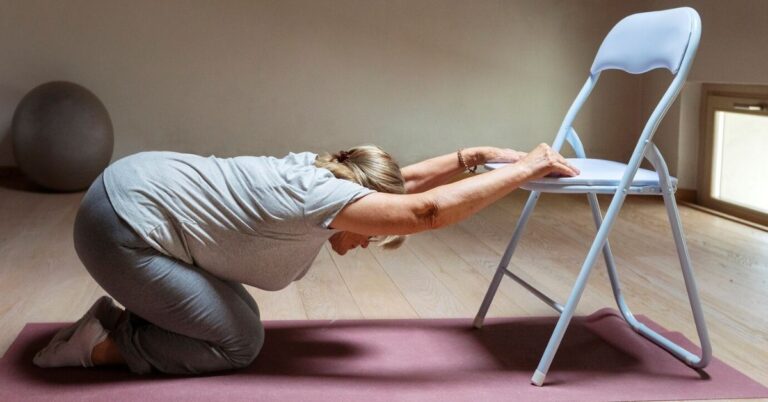Introduction
Maintaining good posture is increasingly challenging in today’s digital age, where many spend prolonged hours seated at desks or hunched over gadgets. Often overlooked, poor posture can lead to a litany of health issues, including disturbances to your pelvic floor health. The pelvic floor, a group of muscles supporting the pelvic organs, is crucial in urinary and bowel functions and sexual health. Proper posture is not only about aesthetics; it is integral to maintaining the optimal function of these vital muscles. Understanding how posture impacts the pelvic floor is essential for anyone looking to enhance or maintain their pelvic health.
The Connection Between Posture and the Pelvic Floor
The pelvic floor acts like a hammock, supporting organs such as the bladder, intestines, and, in women, the uterus. When posture is aligned, the pelvic floor muscles can work efficiently, maintaining organ position and allowing proper function. However, slouched or uneven posture can strain these muscles, reducing their functional capacity. Poor posture, especially one related to prolonged sitting or slumping forward, shifts the alignment of the spine and pelvis. This displacement can increase pressure and strain on the pelvic floor muscles, challenging their ability to contract and relax effectively. Understanding this connection is vital, highlighting the importance of everyday posture in maintaining pelvic health.
Effects of Poor Posture on the Pelvic Floor
When posture is compromised, the effects on the pelvic floor can be extensive. First and foremost, continuous poor posture may weaken the pelvic floor muscles over time. A weakened pelvic floor can contribute to incontinence, where there’s a loss of control over bladder or bowel functions. Additionally, the misalignment can lead to an increased risk of pelvic organ prolapse, which occurs when the pelvic organs drop from their usual position. This condition can cause discomfort and distress and affect a person’s quality of life. Poor posture can also impede blood circulation, which is crucial for muscle health and recovery. This lack of circulation can create a cycle of weakness and dysfunction within the pelvic region, further aggravating existing issues.
Ways to Correct Posture for Better Pelvic Health
The first step to correcting poor posture is awareness. Consciously evaluating your posture throughout the day can make a significant difference. Engage your core muscles by drawing your belly button towards your spine without holding your breath, as this helps maintain natural spine curvature. When sitting, ensure the feet are flat on the ground, and the weight is evenly distributed on the hips. Use ergonomic chairs or supportive cushions if necessary. Position screens at eye level to avoid leaning forward. For those standing for long periods, shifting weight from one foot to the other can prevent excessive strain on one side of the body. Regularly adjusting positions and taking short breaks to stretch can alleviate tension and promote better alignment.
Exercises to Improve Posture and Pelvic Floor Strength
Incorporating exercises to strengthen and relax the posture and pelvic floor muscles is crucial. Core exercises such as planks and bridges reinforce core stability and support posture improvement. When performing these exercises, focus on form to ensure the back remains aligned and the core muscles effectively engage. Additionally, specific pelvic floor exercises, often called Kegels, are essential. To perform Kegels, concentrate on lifting the pelvic muscles as if stopping the urine flow while ensuring the stomach and buttock muscles remain relaxed. Another beneficial exercise is yoga, which enhances flexibility, posture, and muscle strength, offering a comprehensive approach to better pelvic health.
The Importance of Consulting a Professional
While positive lifestyle changes and exercises can make a significant difference, consulting a healthcare professional offers tailored advice and interventions. Physical therapists, especially those specializing in pelvic health, can assess your posture and pelvic floor to provide personalized exercise regimens and treatments. They can help identify and address specific areas of weakness through specialized techniques. Consultation ensures that any underlying conditions are identified and treated appropriately. Moreover, professionals can educate on proper breathing techniques that aid in maintaining a good posture and support pelvic floor function during activities like lifting and exercising, thus integrating them into everyday tasks.
Conclusion
Maintaining good posture is foundational to preserving and enhancing pelvic floor health. Given the pelvic floor’s integral role in daily physiological functions, its preservation through proper posture is essential. By understanding the symbiotic relationship between posture and the pelvic floor, individuals can take proactive steps to optimize their overall well-being. Implementing posture-awareness strategies, engaging in targeted exercises, and seeking professional guidance empower one to maintain a strong and healthy pelvic foundation. Such dedication to posture and pelvic health prevents future issues and enhances overall quality of life.

